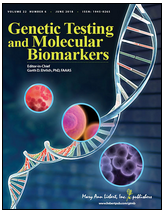 Nearly 95% of patients with SMA would have a homozygous loss of SMN1 (no copies of the SMN1 gene). About 5% would present a heterozygous loss of SMN1 (absence of the SMN1 gene on one chromosome and genetic variant on the other). Among the most widely used methods to perform the genetic diagnosis of SMA are the Sanger method to determine variants of SMN1, as well as quantitative PCR and MLPA to determine the number of copies of the SMN1 gene and the SMN2 gene, a gene which the sequence is almost identical to that of SMN1 but which does not allow the production of SMN protein in sufficient quantity. In recent years, next-generation sequencing techniques (NGS) have become a diagnostic tool increasingly used to simultaneously sequence a panel of genes, the exome or even the entire genome. However, analysis of the SMN1 and SMN2 genes has not yet been fully integrated into these techniques.
Nearly 95% of patients with SMA would have a homozygous loss of SMN1 (no copies of the SMN1 gene). About 5% would present a heterozygous loss of SMN1 (absence of the SMN1 gene on one chromosome and genetic variant on the other). Among the most widely used methods to perform the genetic diagnosis of SMA are the Sanger method to determine variants of SMN1, as well as quantitative PCR and MLPA to determine the number of copies of the SMN1 gene and the SMN2 gene, a gene which the sequence is almost identical to that of SMN1 but which does not allow the production of SMN protein in sufficient quantity. In recent years, next-generation sequencing techniques (NGS) have become a diagnostic tool increasingly used to simultaneously sequence a panel of genes, the exome or even the entire genome. However, analysis of the SMN1 and SMN2 genes has not yet been fully integrated into these techniques.
Integrate the SMN1 and SMN2 genes into the NGS?
An American team investigated whether NGS could, in a single test, be used for the diagnosis of SMA. Researchers thus integrated the analysis of the SMN1 and SMN2 genes into a panel of 122 genes linked to muscular dystrophy, myopathy or congenital myasthenic syndrome. This panel was tested with 5,304 blood samples from people with suspected neuromuscular disease between March 2017 and May 2019 and 68 samples from people with SMA. The results published in July 2020 show that from the 5304 samples, the NGS made it possible to detect:
- homozygous loss of SMN1 in 47 patients (mean age 14 years) whose main symptoms are muscle weakness, symptoms suggesting SMA and hypotonia,
- heterozygous loss of SMN1 in 118 patients,
- a pathogenic variant in another gene in 44 patients,
- an unknown variant in the SMN1 or SMN2 gene in 8 patients. The comparison of the results obtained with the NGS of the 68 samples of SMA and with those obtained with the standard techniques of molecular diagnosis of the SMA revealed a concordance:
- with the quantitative PCR of 100% for the number of copies of the SMN1 gene and of 93% for the number of copies of the SMN2 gene
- 100% with MLPA in both cases.
These results show that it is possible and useful to include the SMN1 and SMN2 genes in a panel of genes to perform the NGS diagnosis of SMA.
